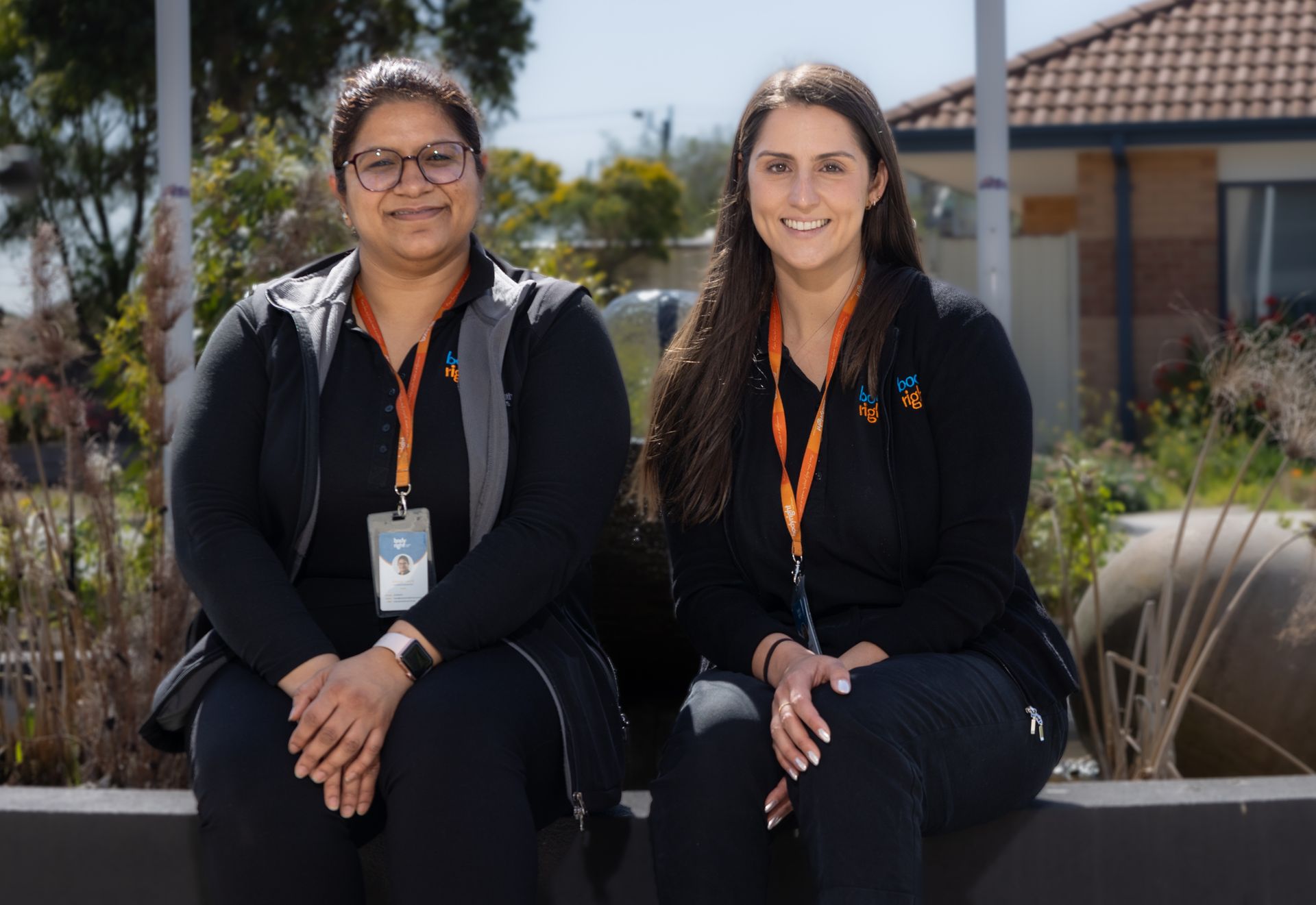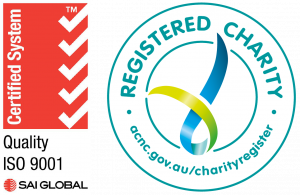Reducing fall risk through allied health in residential aged care homes
Pictured: Kathy, a resident at Fronditha Care St Albans with Karan Kaur, a physiotherapist from BodyRight Healthcare.
Isolation and lack of activity engendered by COVID-19 lockdowns produced adverse health impacts for older people in residential aged care homes (RACHs).
Add your title here
This is the text area for this paragraph. To change it, simply click and start typing. Once you've added your content, you can customize its design by using different colors, fonts, font sizes and bullets. Just highlight the words you want to design and choose from the various options in the text editing bar.
This is the text area for this paragraph. To change it, simply click and start typing. After adding your content, you can customize it.
So, NWMPHN collaborated with aged care providers, residents, and allied health practitioners to coordinate a physical activity program that improves quality of life through reducing fall risk. The design and outcomes of this work align with at least 2 of the 9 pillars of integrated care: ‘population health and local context’, and ‘people as partners in care’.
Multiple international studies identified a link between the low levels of physical activity among residents in RACHs and conditions such as sarcopenia, frailty, obesity and chronic diseases. These impact mobility and balance, increasing the likelihood of falls.
Physical activity is directly linked to the opportunity to exercise.
Add your title here
This is the text area for this paragraph. To change it, simply click and start typing. Once you've added your content, you can customize its design by using different colors, fonts, font sizes and bullets. Just highlight the words you want to design and choose from the various options in the text editing bar.
This is the text area for this paragraph. To change it, simply click and start typing. After adding your content, you can customize it.
Nearly one-third of Australians aged at least 65 have experienced a fall in the past 12 months. Key risks include age, sensory decline, lower limb strength, comorbidities, and cognitive impairment. Almost all people who die from falls are over 65.
Physical activity is directly linked to the opportunity to exercise. This was tellingly demonstrated in the COVID-19 pandemic, which hit people in RACHs extremely hard. In September 2020, the Royal Commission into Aged Care Quality and Safety revealed that RACH residents accounted for 74 per cent of all Australian COVID-19 deaths to that point.
In 2021, the Australian Government Department of Health and Aged Care asked PHNs to commission a measure to improve physical functioning of RACH residents at risk of deconditioning. The program increased access to allied health physical therapy for residents and was initially offered to 53 RACHs most affected by COVID-19 outbreaks in the region.
It was modelled on the Sunbeam program – which had been found to reduce falls among participants by 55 per cent.
NWMPHN continued the program in 2022, collaborating with 13 physical therapy providers. In time, the model was shortened from 26 weeks to 13, based on results.
In 2023, the program was expanded to all RACHs in the NWMPHN region. 83 accepted the offer.
The primary measure used to evaluate effectiveness was a pre- and post- program Short Performance Physical Battery (SPPB) test, measuring strength and balance. Across the 3 rounds of the program, average SPPB increased by 34.65 per cent from baseline. This is a significant improvement on the original Sunbeam results, in which SPPB improvement was 14.15 per cent in 6 months.
Furthermore, the allied health providers have noted that the program is a positive departure from the usual care which they have typically been engaged to supply in RACHs.
The program is an excellent example of the results that can be achieved through fostering cooperation between allied health practitioners, aged care providers, and residents, responding to an unprecedented challenge, backed by solid academic research.
Early indications suggest it can protect and improve quality of life for older people. Reducing falls also leads to a lower number of emergency department presentations and consequent hospitalisations. Analysis over time may well reveal a cost saving overall as well as a continuation of healthy life for residents.
“I’m not a frog!”
Case study: Fronditha Care St Albans
Fronditha Care St Albans is one of the RACHs participating in the program in 2022–23. We met allied health professionals Jackie Kovacev and Karanpreet (Karan) Kaur from BodyRight Healthcare at Fronditha recently to chat about the program.
Kathy, a resident, was quite literally in the hot seat when we arrived. The weather was warm and she had just completed a strenuous 10-minute warm up with her strengthening band.
“I need some water – I’m working hard!” she says.
The energy and rapport Kathy has with Karan and Jackie is immediately obvious. So, too, is her sharp sense of humour.
When an errant strengthening band springs back a little, Kathy teases Karan: “Be careful – we’re on camera!”
Fronditha Care St Albans is a state-of-the-art facility for members of Melbourne’s Greek community. Its staff speak Greek; Jackie and Karan don’t, but they’re learning. They count each of the exercises and exchange short conversations in the residents’ native tongue.
“The residents appreciate it, and it helps them feel more comfortable with us,” says Karan.
“It can be a great motivator as well,” says Jackie.
“If someone isn’t really feeling like doing their exercises, we say ‘Oh, I really need my Greek lesson today’ and they say ‘okay, let’s do it!’”

Pictured: Karan Kaur (L) with Jackie Kovacev, an osteopath and clinical operations manager at BodyRight Healthcare.
After a short break, Kathy does 5 sit-to-stands, followed by breathing exercises, then another 5. “I’m improving! Can you see?” she says.
“Kathy couldn’t do that when we first started,” says Jackie.
“Now she is doing it unassisted. Not only that, she is walking up and down the hallways with her frame.”
Karan chimes in: “Last week, she walked all the way to the cafeteria.”
“Next, I’ll be dancing!” says Kathy.
While the residents’ improved strength is obviously helping to guard against falls, the program is also helping to reduce the number and severity of pressure injuries (bedsores).
“Pressure injuries are really common, as residents spend a lot of time sitting,” says Karan.
Since starting our program, their mobility has improved – they’re able to reposition themselves and that helps to ease the pressure build-up.”
The program is also very satisfying professionally.
“To be able to come in and have that level of job satisfaction because you can see how much they're improving, and you can see the difference you're making. By you know, watching them improve every week by also but also by seeing the data. So in two different ways, you can see how much you're helping. That's wonderful."
By this stage Kathy is clearly working hard, but she hasn’t lost her sense of humour.
“Would you like some more water, Kathy?” asks Karan, after a particularly demanding round of balancing and calf raises.
“I’m not a frog!” she replies, tongue firmly in cheek. “OK, what’s next?”
Older people comprise one of NWMPHN’s priority populations. We codesign, commission and fund a range of programs aimed at improving health outcomes for people over 65, who live in RACHs or independently. More details are available on
our website and
flyer.
Our STORIES
COMPASS points in the right direction for better mental health care for children
Keep up to date with the latest news and publications, funding opportunities, careers and upcoming events at NWMPHN.

